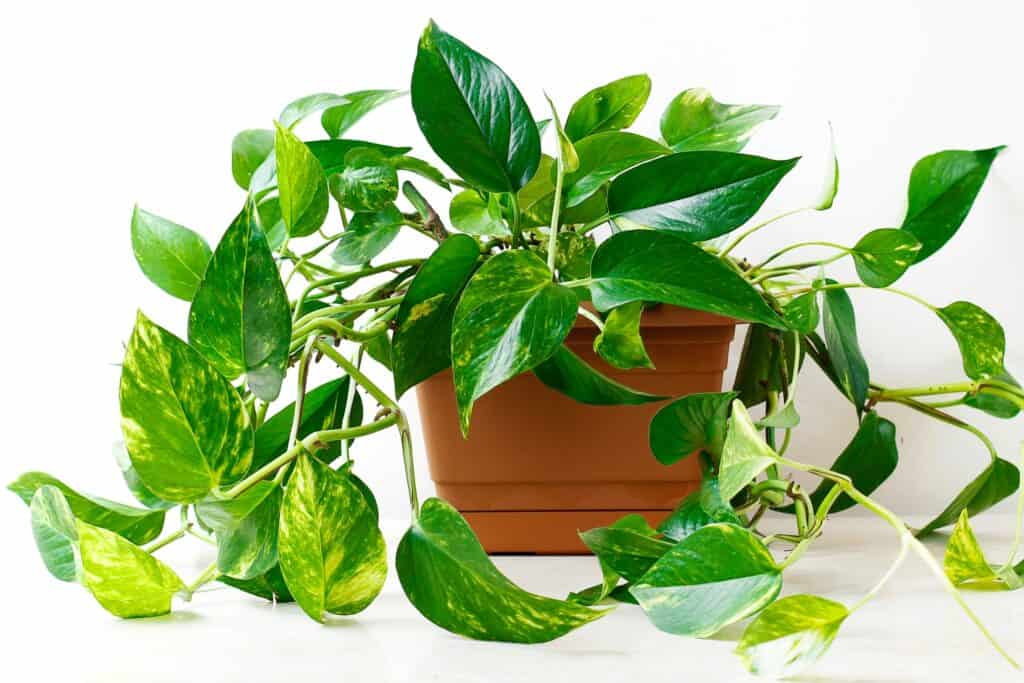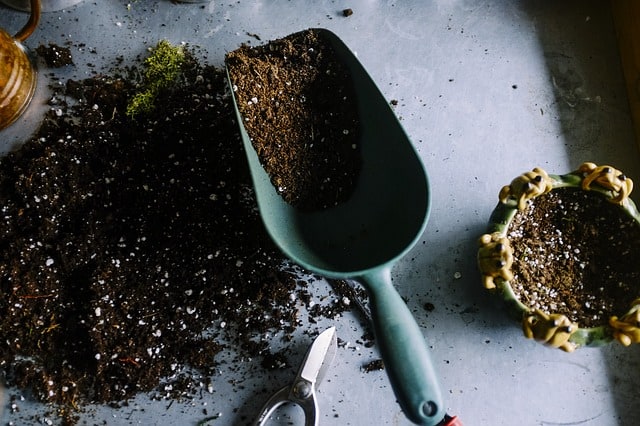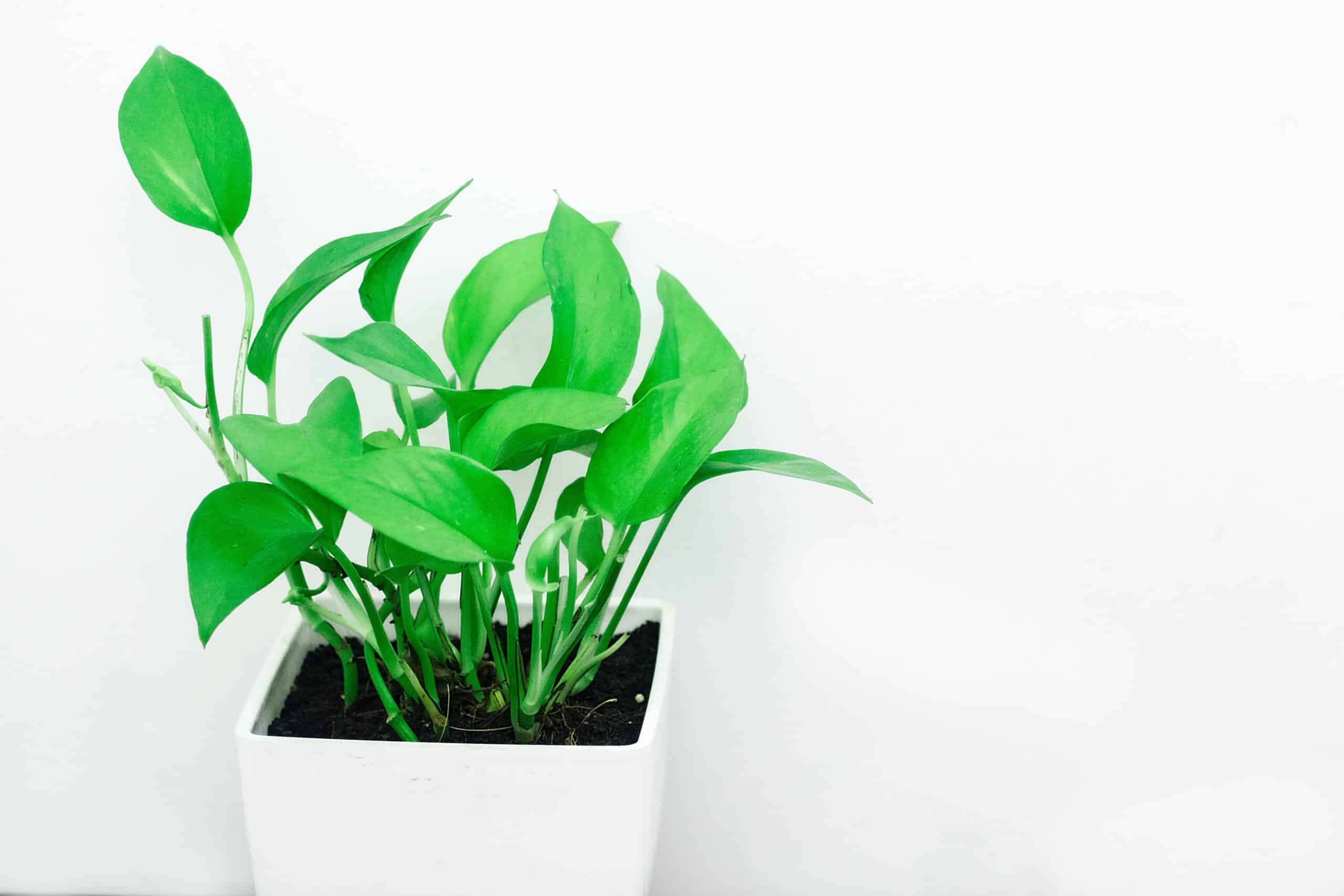Taking care of well-grown pothos is easy-peasy! Give them water occasionally and place them in a bright window, and you’re all set. However, when it comes to propagating baby pothos and taking care of these darlings, many plant parents experience failures and disappointments.
Is it a complicated process? After all, what sort of care and requirements do baby pothos require?
Make sure to water your baby pothos on time as they are highly prone to dehydration. Also, ensure that they are not placed in direct sunlight and are away from harsh temperatures.

Just as human babies, baby pothos also have specific requirements with regards to their growing conditions. Failure to meet these basic requirements can either cause death to your baby pothos or they will develop into an unhealthy adult plant.
Table of Contents
Why do Baby Pothos Plants Need Special Attention?
Baby pothos requires an extensive amount of care when they are still young. The fact that their root systems have not been well-developed poses numerous threats to your newly propagated baby pothos.
The followings are the primary reason why you should give special attention to baby pothos:
- Baby pothos is prone to root rot in response to inappropriate watering schedules.
- They can quickly get dehydrated or overhydrated, leading to the death of the plant.
- Baby pothos is susceptible to fungal and bacterial infections.
- Unhealthy growing conditions and lack of care can stunt your baby pothos for life.
Growth Pattern of Baby Pothos

Baby pothos considerably grows faster if we compare them to other house plants.
As most of your plant cutting will already have a small nodule, they will start functioning and expanding into roots as soon as we place them in a growing medium.
The growth pattern of baby pothos will depend heavily on the type of growing medium you have provided to your pothos plant.
1. Baby Pothos in Soil Medium
Baby pothos in a soil medium initially takes time for the roots to develop. The roots roughly start appearing after a week.
However, once the roots have reached a length of one inch, they tend to grow and spread rapidly.
With appropriate growing conditions, they will have a well-developed and healthy root system by one month.
The growth in the stem and leaves can only be noted after 45 days on average. Your baby pothos will not develop any new leaves or stem growth unless it has developed a robust root system to meet its nutritional needs.
After the third month, you are good to add some natural and organic plant vitamins to speed up the development of baby pothos. However, make sure you do not overdo the process.
By the fourth month, you will observe that your baby pothos will start trailing and appearing bushier.
A healthy pothos will produce at least one leaf in a week or more, depending on growing conditions. In fact, it will no longer be a baby pothos!
2. Baby Pothos in Water Medium

Baby pothos in water medium start developing tiny white water roots within a few days of placing them in water. Usually, it takes less than a week to observe slight growth in the roots. However, the roots grow very slowly after the first week.
They take a very long time to develop into a healthy connection of roots, sometimes more than three months.
It may seem like your baby pothos is taking ages to develop new leaves in a water medium, which is true because water roots are not as solid and dependable as soil roots.
The fresh leaves may start appearing roughly after the second month or the third month.
You can speed up the development process of your baby pothos by adding in some water-based plant fertilizers.
Please make sure that your baby pothos has a well-developed root system and is at least three months old before fertilizing it.
Your baby pothos in a water medium will not trail as they would have in a soil medium.
And, it will definitely take some extra time to give you new leaves. A healthy and well-fertilized water-rooted pothos will produce a new leaf every 20-30 days.
6 Ways to Take Care of Baby Pothos
If you want your pothos baby to grow into a beautiful and glorious trailing pothos, you will need to take good care of it from a very young age.
As they say, morning shows the day. Similarly, a happy and healthy pothos baby will develop into a hale and hearty adult plant.
The following six steps discussed below will ensure that your baby pothos is taken care of in a perfect manner.
1. Check the Lights
Although pothos plants love bright indirect light, we cannot say the same for baby pothos. If you expose your tiny pothos in bright light, it may cause severe dehydration leading to death.
The roots in a baby pothos are too fragile to absorb enough water to keep up with the transpiration process.
Hence, place your baby pothos in a semi-lit location until their roots have been well developed.
2. Maintain a Healthy Watering Schedule
Too much water will kill your baby pothos by causing root rot. And too little water will dehydrate your plant.
It is best to water your pothos when the topsoil is slightly dry. Unlike adult pothos, it is recommended not to wait for the topsoil to dry out completely.
Make sure that the soil is damp after every watering routine; however, don’t drench the potting soil entirely.
As for baby pothos in a water medium, make sure to change the water once every week.
3. Use a Well-Draining Potting Mix

Using dense soil is the worst thing you can do to your baby pothos. The denser the soil, the higher will be the water retention leading to root rot.
Additionally, soggy and wet soil is also a perfect match for fungus and bacteria development.
An adult pothos will recover from root damage and infestations; however, the same cannot be said for baby pothos.
The tiny roots are unable to endure such damages. Hence, use sterile potting soil with a large amount of perlite and orchid barks.
4. Do not Fertilize your Baby Pothos
Pothos are not heavy feeders, and it is strongly recommended not to fertilize your baby pothos unless they have developed about 5-8 new leaves.
New leaves denote that the root system has been well-developed.
Fertilizing your baby pothos can cause severe root burns. Furthermore, the nutrition in soil and water is enough for the pothos.
When fertilizing them, make sure to use a water-soluble plant vitamin for best results.
As for baby pothos in a water medium, delay the fertilization process as much as possible.
And, it is recommended to use NPK fertilizers only when you see that the roots have formed a dense connection.
5. Baby Pothos Loves a Good Mist

Whether you live in a humid or non-humid climate, it is always recommended to mist baby plants every single time you water them.
The same goes with baby pothos as well. Pothos is a tropical plant, and it is best to give it a little moisture boost to prevent dehydration.
After each mist, make sure to wipe down the plant with a clean cloth to avoid fungal infections.
6. Lastly, Watch out and Evaluate
Sometimes a general rule may not be absolute for every pothos, and the requirements may differ according to the growing conditions and season.
Therefore, it is best to observe your baby pothos and understand what it needs carefully.
The following points may help you evaluate what your baby pothos is lacking.
- The leaves are crispy or yellow in appearance – Your plant is dehydrated.
- Leaves appear soft with brown edges – Your plant is overwatered.
- The tip of your baby pothos appears brown – Your plant is suffering root rot.
- The leaves are not shiny and waxy – Your plant requires more humidity.
- If the leaves are black with zero plant growth – The environment is too cold.
- Pale and limp leaves – Your plant is receiving too much light.
- Loss of color on the leaves – Your plant is receiving too little light.
How Often should you Water Baby Pothos?
Baby pothos is exceptionally prone to dehydration and drying due to underwatering.
Henceforth, water it once every 2-3 days, depending upon the humidity levels of your surroundings.
You can use regular tap water or spring water to water your baby pothos. However, if your tap water is highly chlorinated, your baby pothos will not like it.
Hence, let the water sit overnight before using it to feed your pothos.
Do not use cold water as it can damage the roots. Lukewarm water or regular water at room temperature works the best.
You can also opt for the bottom-up watering technique once the baby pothos is a month old.
When you water your baby pothos, water them slowly and stop once you see water dripping from the drainage holes.
Immediately remove the water collected on the drainage tray to avoid excess water retention.
When do you Re-Pot a Baby Pothos?
Baby pothos doesn’t take much time to be root bound as they are primarily propagated in a small pot or propagation tray.
Hence, your baby pothos will be ready to be re-potted in a slightly bigger container within 6-9 months.
Make sure to check the drainage holes before re-potting. If the roots are not emerging out of the holes, your baby pothos is not ready for re-potting.
When re-potting, make sure to use a fresh potting mix and use a pot that is only about 2 to 3 inches bigger than the current one. Using a huge pot is a big no.
It is recommended to fertilize your baby pothos when you re-pot them for the first time to enhance the growth of your pothos.
Give some time to the baby plant to adjust itself. And fertilize only after a week.

Points to Remember
- Sometimes a few leaves in the pothos baby might turn yellow and limp. This is due to the fact that the tiny roots are not able to absorb enough nutrients for the entire plant. Always cut off these dead or dying leaves.
- If you see any signs of bugs infestation on the mother plant, make sure to spray the baby plant with organic insecticides such as neem oil. Do not spray the insecticide on the soil.
- Ensure that the plant pot has a high number of drainage holes to prevent water retention and root damage. It is best to use a propagation tray for baby plants.
- Do not change the location and the positioning of baby pothos frequently. Keep them in the same spot until they are at least two months old to avoid stress. Baby pothos is very sensitive to change.
- Do not propagate pothos in the winter or autumn seasons. The chances are that the baby pothos might not make it or will probably be sickly for all its life.
To Wrap it up!

Unlike other baby plants and seedlings, pothos babies are not very fussy and needy. As long as you provide them with appropriate growing conditions, they will develop into healthy trailing pothos in no time.
Parenting a baby pothos is not challenging, but it is definitely tricky. Make sure to check on them every day!


